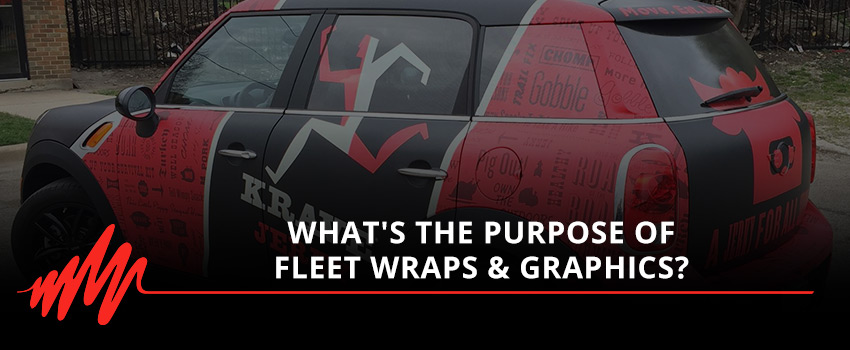
WHAT’S THE PURPOSE OF FLEET WRAPS & GRAPHICS?
MAY 29, 2019| SpeedPro Saint PetersburgCategories
tipsThe world is full of billions of people, millions of businesses and seemingly endless amounts of advertising. As the owner of a small- to mid-sized company, one question you might frequently have is, “How can I reach my target audience?” You have plenty of options when it comes to advertising, but not all of them are particularly effective. Some might also be overly expensive.
There’s one advertising strategy that’s relatively new and affordable. Fleet wraps and graphics and vehicle wraps encase a truck, car or other vehicle with information about a company.
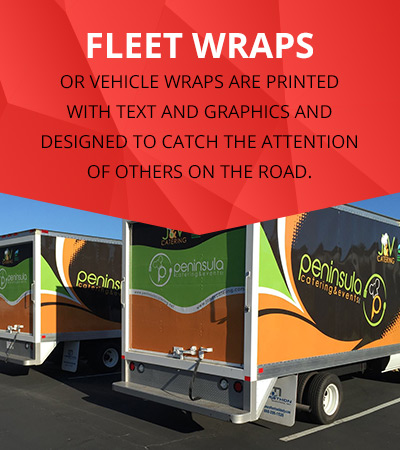
WHAT ARE FLEET WRAPS?
Fleet wraps or vehicle wraps are made from a heavy-duty vinyl material. The wraps are printed with text and graphics and designed to catch the attention of others on the road, providing them with information about your company’s product or service.
Fleet wraps are an example of “out of home” or OOH advertising. According to the Outdoor Advertising Association of America, OOH advertising is one of the oldest forms of advertising out there. It pre-dates radio and television ads by years. Some of the earliest forms of OOH advertising were ads painted on horse-drawn carriages, which you could also consider the grandparent of today’s vinyl fleet wraps.
TYPES OF FLEET WRAPS AVAILABLE
One misconception business owners often have about fleet wraps is that they need to have a large company or operate a fleet with hundreds of vehicles to take advantage of the method. In reality, any size business can benefit from a vehicle wrap, and there are various sizes and types of wraps available to accommodate different needs. Some of the vehicle wraps available include:
- Full wrap: As you might guess, a full wrap covers the entire vehicle, whether it’s an SUV or 18-wheel tractor trailer. Full wraps tend to be the most eye-catching and attention-grabbing.
- Partial wrap: A partial wrap covers a portion of a vehicle and usually costs less than a full wrap. The drawback is that the partial wrap might not be as visually noticeable or might not be visible from all sides.
- Spot graphics: Spot graphics are the smallest type of vehicle wrap design. You might think of them as a vinyl sign attached to the side of a truck or car.
- “One-way vision” wraps: If you’ve ever seen buses or vans with graphics covering the windows, you might have wondered how the people in the vehicle, especially the driver, can see. Although vehicle wraps can cover up windows, the material used on the window surface is perforated. The perforated material lets a driver see clearly through the window, while the wrap looks like a full graphic to people outside.
- Printed or pre-colored decals: In some cases, the vinyl wrap on a vehicle is pre-printed or pre-colored before installation.
- Specialty vinyl: Specialty vinyl options range from color shift vinyl to camouflage. Carbon fiber materials are also sometimes available.
THE BENEFITS OF CHOOSING FLEET WRAPS FOR VEHICLES
Although you might not want to abandon your other marketing and advertising efforts, adding vehicle or fleet wraps can provide several benefits. The advantages of vinyl car wraps are numerous. They:
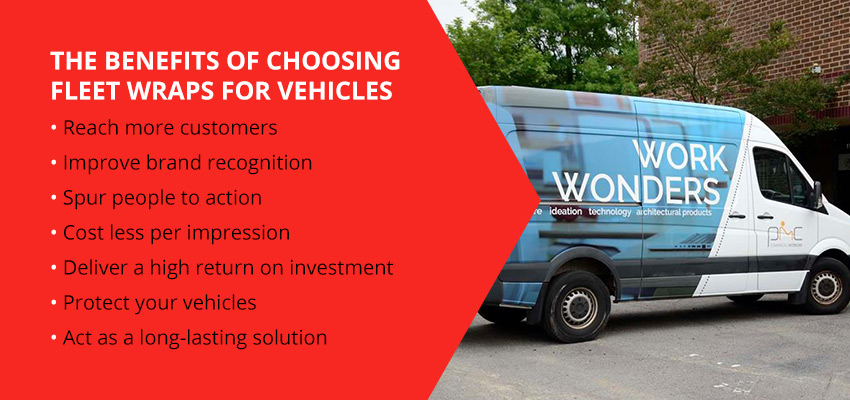
- Reach more customers: Whether they drive themselves, take a taxi or Uber or ride the bus, people spend a lot of time in traffic. The average commuter spends about 42 hours per year in traffic. That’s plenty of time for someone to notice the printed vehicle sitting in the lane next to them or the wrapped truck a few vehicles over. Not only that, but vehicle wraps have the ability to reach 95 percent of the population, and they can reach even more people when they’re paired with another form of advertising. The OAAA found that outdoor ads such as vehicle wraps can increase the reach of a mobile ad campaign by more than 300 percent and the reach of a TV ad campaign by 18 percent.
- Improve brand recognition: Having people see the ads is just the first part of the challenge. You also want them to recognize and remember your brand. Fortunately, vehicle wraps are 15 times more likely to increase people’s recognition of a brand.
- Spur people to action: Vehicle wraps not only help people remember and recognize your company, but they’re also likely to inspire people to act. Nearly 60 percent of people will search online after seeing an outdoor ad such as a wrapped vehicle, and around 70 percent of people say that outdoor ads such as wrapped vehicles have influenced a purchasing decision. Repeat exposure helps — nearly 60 percent of people will buy a product after seeing an outdoor advertisement five times.
- Cost less per impression: Another considerable advantage of vinyl car wraps is that they tend to cost much less than other forms of advertising. The cost per 1,000 impressions (CPM, or “cost per mille”) of a network TV ad during prime time is around $25. The CPM of a newspaper print ad is more than $30, and the CPM of a radio ad is approximately $10. Meanwhile, the CPM of a vehicle wrap is around 77 cents.
- Deliver a high return on investment: Vehicle wraps don’t just cost less than other forms of advertising — they also tend to have a higher return on investment (ROI). Every dollar spent on an outdoor advertisement tends to generate $2.80 in sales.
- Protect your vehicles: The vinyl material used to wrap a car or truck tends to be weather-resistant and is able to protect the exterior of a vehicle from wear and tear.
- Act as a long-lasting solution: One last advantage of vinyl car wraps: They tend to be durable. The typical radio or TV spot will run for a few weeks or months before a new one needs to be created. Meanwhile, vehicle wraps can last for much longer.
WHAT COMPANIES CAN USE FLEET WRAPS?
At this point, you might find the idea of using fleet wraps or wrapping a vehicle in graphics appealing, but you might also be thinking, “That’ll never work for my business.”
In reality, no single “ideal” company will benefit the most from fleet wraps. Any type of business can use the graphics to promote their products and services and reach new customers. If you have to drive a vehicle for your business for any reason, even if it’s just to commute back and forth between home and the office, your company can benefit from vinyl car wraps.
Here’s a short list of companies that can use vehicle or fleet wraps:
- Restaurants and cafes, especially establishments that offer delivery
- Dry cleaners
- Daycare centers
- Installers (such as cable installers, security alarm installers and others)
- Repair companies (such as furnace and HVAC repair)
- Furniture companies
- Delivery companies
- Housekeeping services
- Home healthcare companies
- Performing arts companies
EXAMPLES OF VEHICLE WRAPS IN ACTION
You don’t have to look very far to see examples of fleet or vehicle wraps. One of the earliest instances of vehicle wrapping took place in 1993, The New York Times reported. PepsiCo purchased the rights to paint six Seattle buses with its logo. The painting project would have taken six weeks, meaning the bus company would be down six vehicles for more than a month.
PepsiCo soon realized that it could wrap the buses with vinyl and that the entire process would take just a couple of days — a process that’s even faster now, as a vehicle can be wrapped in just a few hours.
One particularly interesting example of an unexpected company using vehicle wraps to get its message across comes from the Los Angeles Opera. To promote its 2007–2008 season, the Opera company applied vinyl wraps to tanker trucks. The tanker trucks were sent out on the LA freeways for up to 20 hours per day and six to seven days per week.
The fleet wraps cost the Opera about 25 percent of what it would have spent on a billboard advertising its season. In the LA area (in 2007), billboards cost at least $4,000 per month. Meanwhile, the Opera spent about $1,000 per month on its wrapped trucks. To help the company track impressions and figure out how frequently the ads were viewed, GPS units in the trucks recorded the vehicles’ positions every 15 minutes.
In some instances, it’s not the vehicles owned by a company that get vinyl wraps, but instead vehicles owned by individuals. The New York Times noted that some companies hire regular people, paying them around $500 to $800 per month to have their cars encased in vinyl advertising. People have driven their personal vehicles while promoting everything from upcoming movies to Tide laundry detergent and from Jamba Juice to Verizon.
HOW TO MAKE THE MOST OF VEHICLE WRAPS
Vehicle wrap design is pretty important if you decide to wrap your fleet or even a single car or truck in vinyl. You want to get your company’s message out there, and you want people to be able to process the information without too much effort.
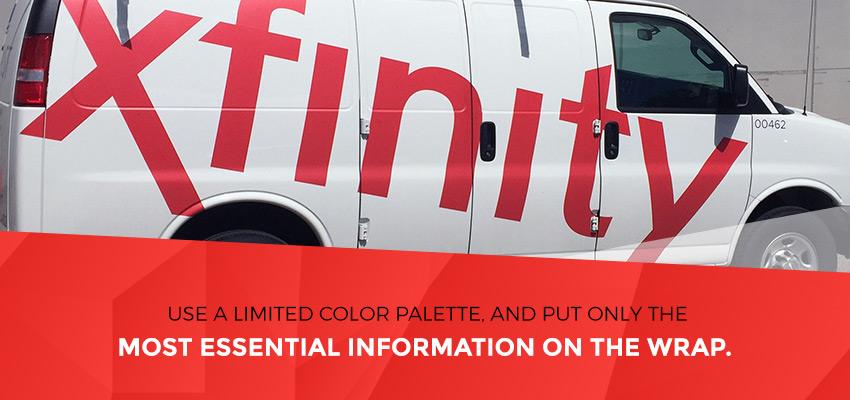
Sometimes a “less is more” approach works best when designing a vinyl wrap. Although you might have a considerable amount of space on your vehicle, especially if you’re covering a large trailer or the side of a large van, that doesn’t mean you need to cram it full of details. Use a limited color palette, and put only the most essential information on the wrap. It should include a phone number, email or your preferred contact method as well as your company’s logo or other branding.
It’s worth thinking about how long you plan to use the graphics as well. It might seem like a great idea to use a vinyl wrap to present a special holiday promotion, but once the promotion is over or the holiday has passed, the graphic becomes outdated, and you’ll need to start over again. Often, it’s a good idea to keep your wrap design and text timeless.
HOW TO TRACK THE PERFORMANCE OF FLEET WRAPS
How can you know how many people are seeing your advertisements or car wraps? It helps to use traffic data and to track where your wrapped vehicles go. GPS information gives you access to the routes your drivers took. You can then compare that information to the available traffic data for the routes, which will give you a general idea of how many people saw the vehicle. Another option is to ask customers, particularly new customers, how they found out about your company.
FREQUENTLY ASKED QUESTIONS ABOUT FLEET WRAPS
At this point, wrapping a vehicle or a fleet of vehicles might sound like a good fit for your company. However, it’s normal if you still have questions about the process or about what you can expect. Here are a few answers to the most commonly asked questions about fleet and vehicle wraps:
- How is a vehicle wrap installed? Usually, installing a vehicle wrap is a multi-step process. There’s the design component, which involves measuring the vehicles and creating an appealing, easy-to-read design. The next step is to create the wrap itself, printing it on vinyl and laminating the vinyl to protect it from the elements. Finally, the wrap is installed on the vehicle.
- How do you prepare a vehicle for a wrap? Usually, trucks and cars need to be clean and in decent condition before the wrap can be applied. A vinyl wrap won’t stick to areas where there is rust or corrosion, for example. Wraps also don’t adhere properly if the car has been waxed or if there’s silicone on its surface.
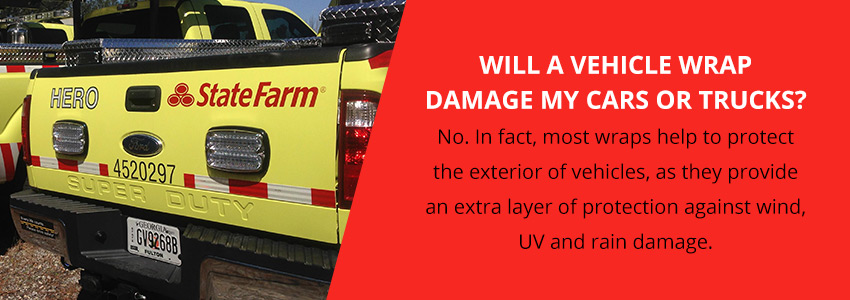
- Will a vehicle wrap damage my cars or trucks? No. In fact, most wraps help to protect the exterior of vehicles, as they provide an extra layer of protection against wind, UV and rain damage.
- How are full and partial wraps different? The main difference between a full and partial wrap is the amount of vehicle they cover. A partial wrap might cover between half and three-quarters of the vehicle or a much smaller area, such as a back windshield or just a window or two.
- How long will the wrap last? The lifespan of the wrap depends on the type you choose and when you decide to remove it. It’s possible for wraps to last for five years or longer, but you might want one that has a lifespan of just a year.
- What happens to the wrap if my vehicle is damaged? If a wrapped vehicle gets into an accident and is damaged in some way, it might be possible to fix the damaged area of the wrap without having to completely redo it. It all depends on the extent of the damage. Usually, it’s a good idea to get your vehicle repaired first, then focus on correcting any damage to the vinyl wrap.
If you’re ready to learn more about fleet wraps or vehicle wraps and how they can help your business, SpeedPro can help. We offer full and partial wraps and can customize a project to meet your needs.
